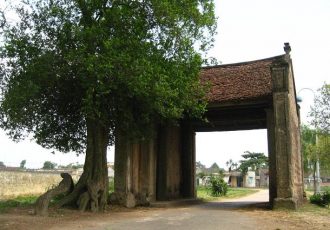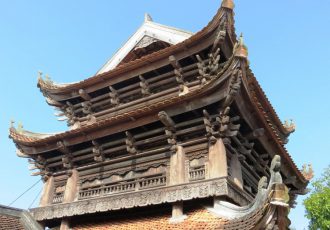A general overview of Vietnamese handicrafts
The traditional Vietnamese craftsmanship is one of the richest aspects of Vietnamese life. It is also in this area that the Vietnamese have left a very strong identity. From the dawn of their civilization between 3000 and 4000 years ago, the peoples on this territory already excelled in certain activities that required the skill of the hands. Bronze drums, carefully crafted stonework tools or commonly used pottery objects discovered during archaeological excavations are the most eloquent proofs of this. Later, at a higher level of organization of peasants and craftsmen, especially Viets, Vietnamese craftsmanship developed both in terms of variety and technicality. Whether it is the bronze trade, the ceramic trade, the metal trade or a multitude of others, Vietnamese craftsmanship is organized into corporations linked to villages. This is the most original feature of handicrafts in Vietnam, that is, the Vietnamese were able to integrate industrial and artisanal activities into the rural economy very early on, and therefore these activities, unlike the situation in most other countries, do not constitute the monopoly of cities.

Vietnamese handicrafts in the past
Indeed, if we study the general picture of the development of crafts in Vietnam, we will quickly see that the river delta, the cradle of the civilization of the Vietnamese is also the place of a high concentration of craft villages. Already in the first century AD, at the time of the Chinese conquest, Vietnamese craftsmanship in the Red River Delta had reached a relatively high level of technicality. We mastered the techniques of metallurgy, the casting of bronze and iron. And pottery, already flourishing in earlier eras, had become sophisticated with the techniques of enamel. The two most successful crafts were weaving and basketry. Cotton, silk fabrics, baskets, bamboo and rattan baskets were very famous. In the third century, paper was made, thanks to techniques imported from China. Later, to satisfy the luxury needs of the Court and local officials, the techniques of chiselling silver and gold were perfected thanks to close exchanges with the Middle Kingdom. Lacquer was already known for four centuries BC, (objects covered with lacquer and tools to spread it were discovered in tombs of that time). At the beginning of the first millennium, Vietnamese craftsmanship had already asserted itself. With the end of the Chinese conquest, we witnessed the rise of the villages of trade. As early as 1010, when Emperor Lý Thái Tổ moved the imperial capital from the site of Hoa Lý to that of Thãng Long, on the banks of the Red River, many villages developed craft activities. Thanks to the granting of monopolies, they devoted themselves to sacred and luxury crafts (silks, ceramics, jewelry, embroidery, papers for royal edicts, furniture, objects inlaid with mother-of-pearl, statuary…) intended for the Imperial Court and the wealthy Vietnamese social classes. Evidence of the first purchases of Vietnamese handicrafts such as cotton canvases, silk fabrics or ceramic products, by China and Japan, shows the prestige of Vietnamese crafts in the eyes of very demanding customers in Asia.

In the centre, the richness of some Vietnamese crafts has also embellished the general picture of crafts in Vietnam. The chams of the Center have recognized know-how in pottery or wood carving, know-how that translates not only a high level of technicality using very rudimentary tools but also a very high level of aesthetics. Stone carving is also an asset of the Central Region.
Through the two wars and a long period of centralized and planned economy, crafts in Vietnam have experienced their renaissance, but they have to face other problems. The most fatal change is that in many cases, the model of organizing trade villages has broken out. While only a minority of trade villages have been able to keep their marks by maintaining and developing their products with great difficulty, many others have seen their production space shrink or their market shares decline. We also see in this break-up a great effort by some individuals who, while acting to defend the brands of their trade villages, courageously engage in a new and more creative production path to adapt to new fierce competitors, especially with chain production. In recent years, there have been many successes of individuals or families of craftsmen in the creation and promotion of typical Vietnamese handicrafts, whether in the trades of lacquer, basketry, silks, stones, metal or others…

Today’s Vietnamese Handicrafts
Nowadays, during a trip to Vietnam, a visitor can get an idea about Vietnamese handicrafts by visiting some museums like the Museum of National History, the Museum of Ethnology, or even leaving Hanoi to go to some craft villages around this city, such as the ceramic village of Bat Trang, that of the pottery of Phu Lang, that of the lacquer of An Thai…
Discover Vietnamese craftsmanship in video



